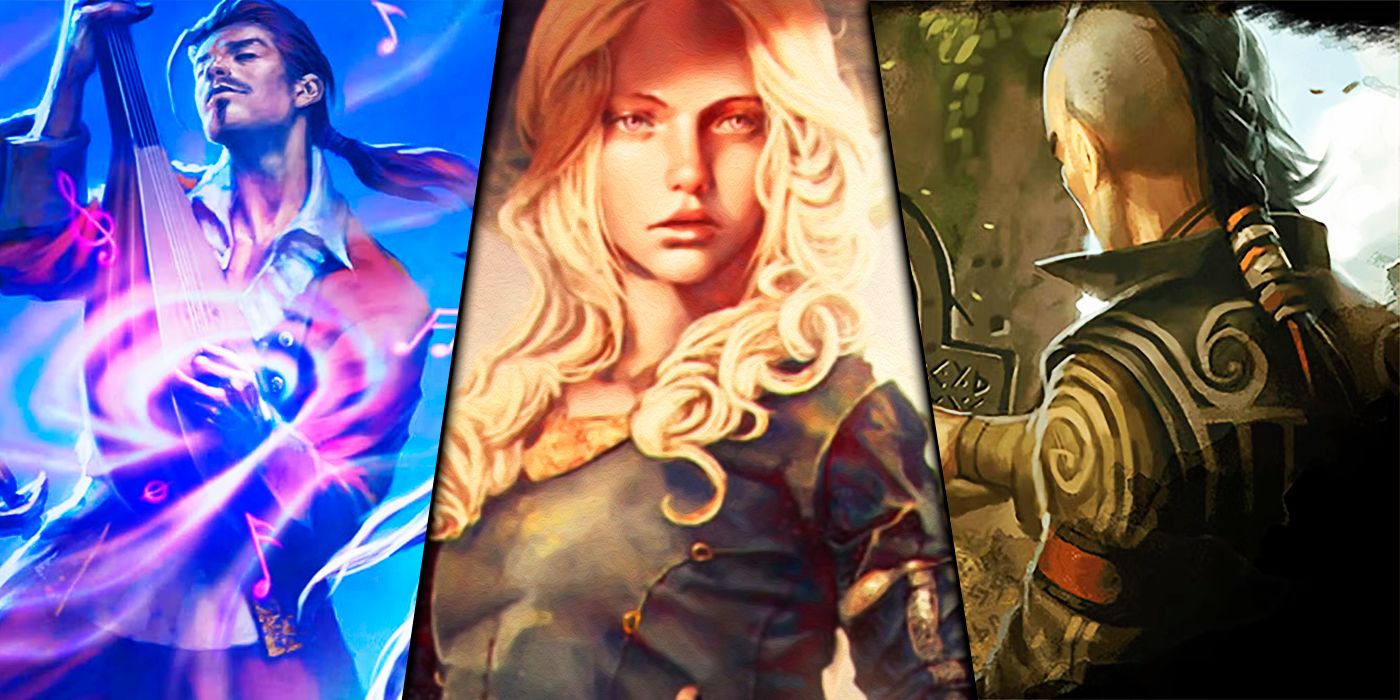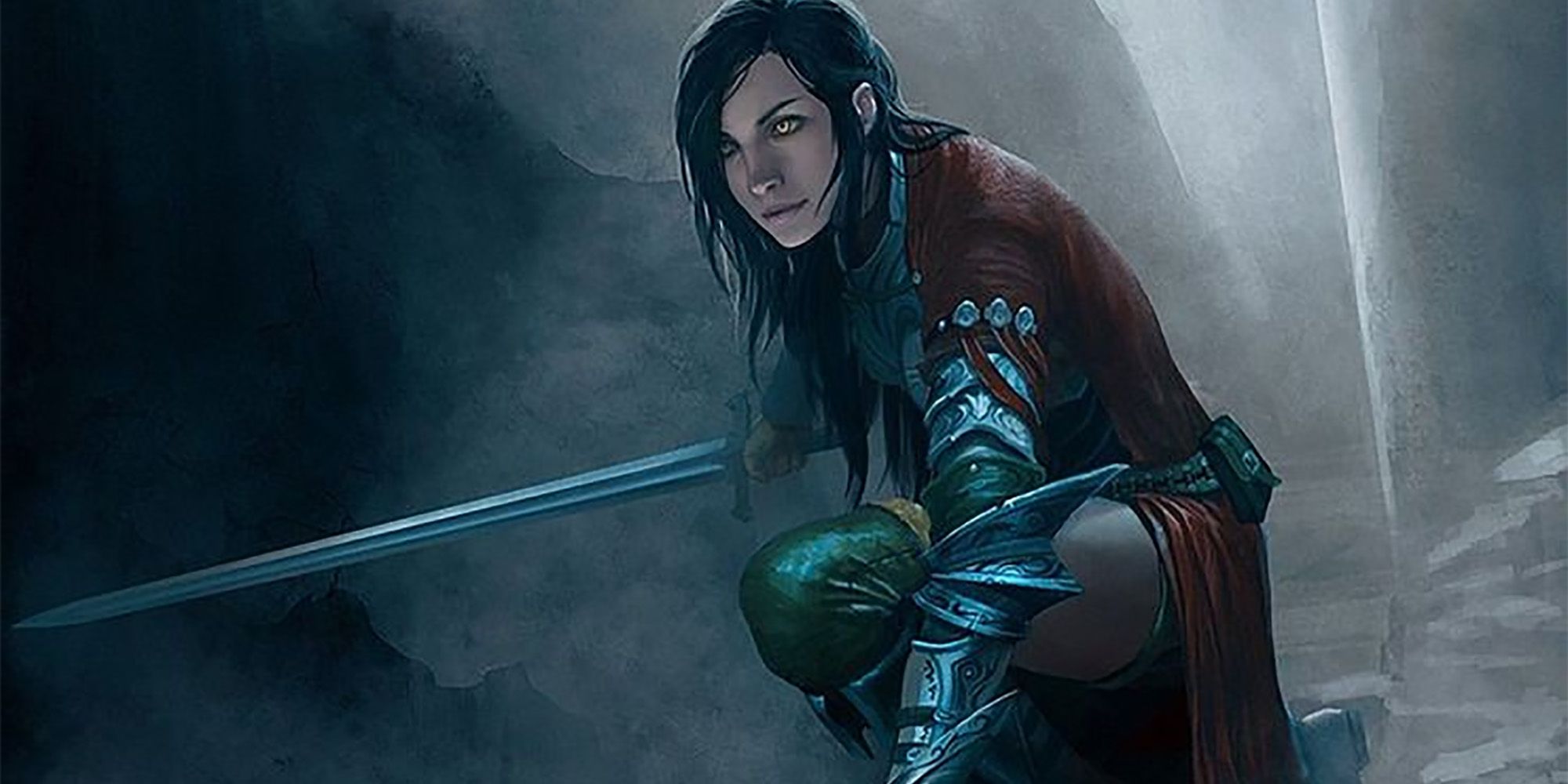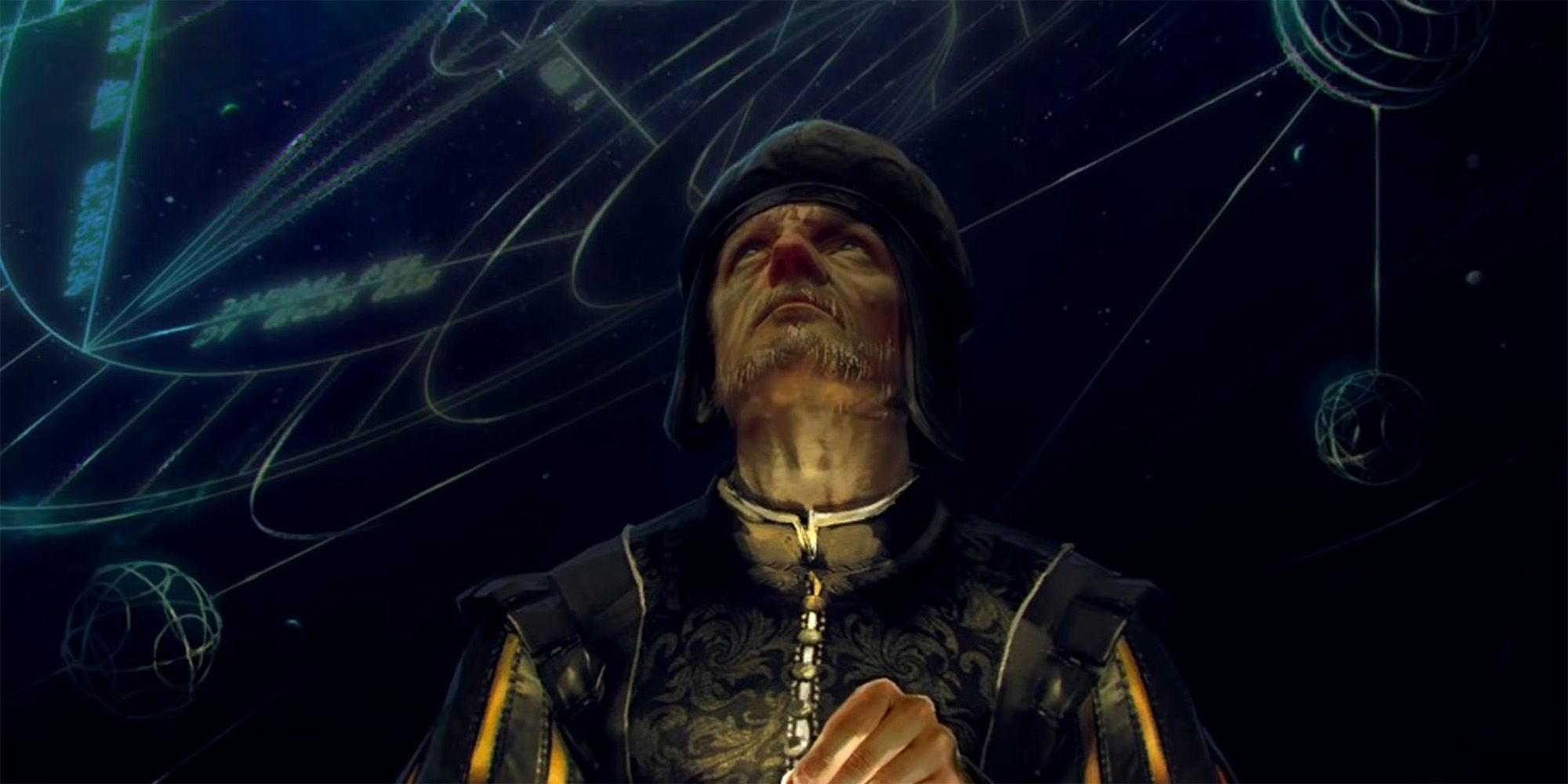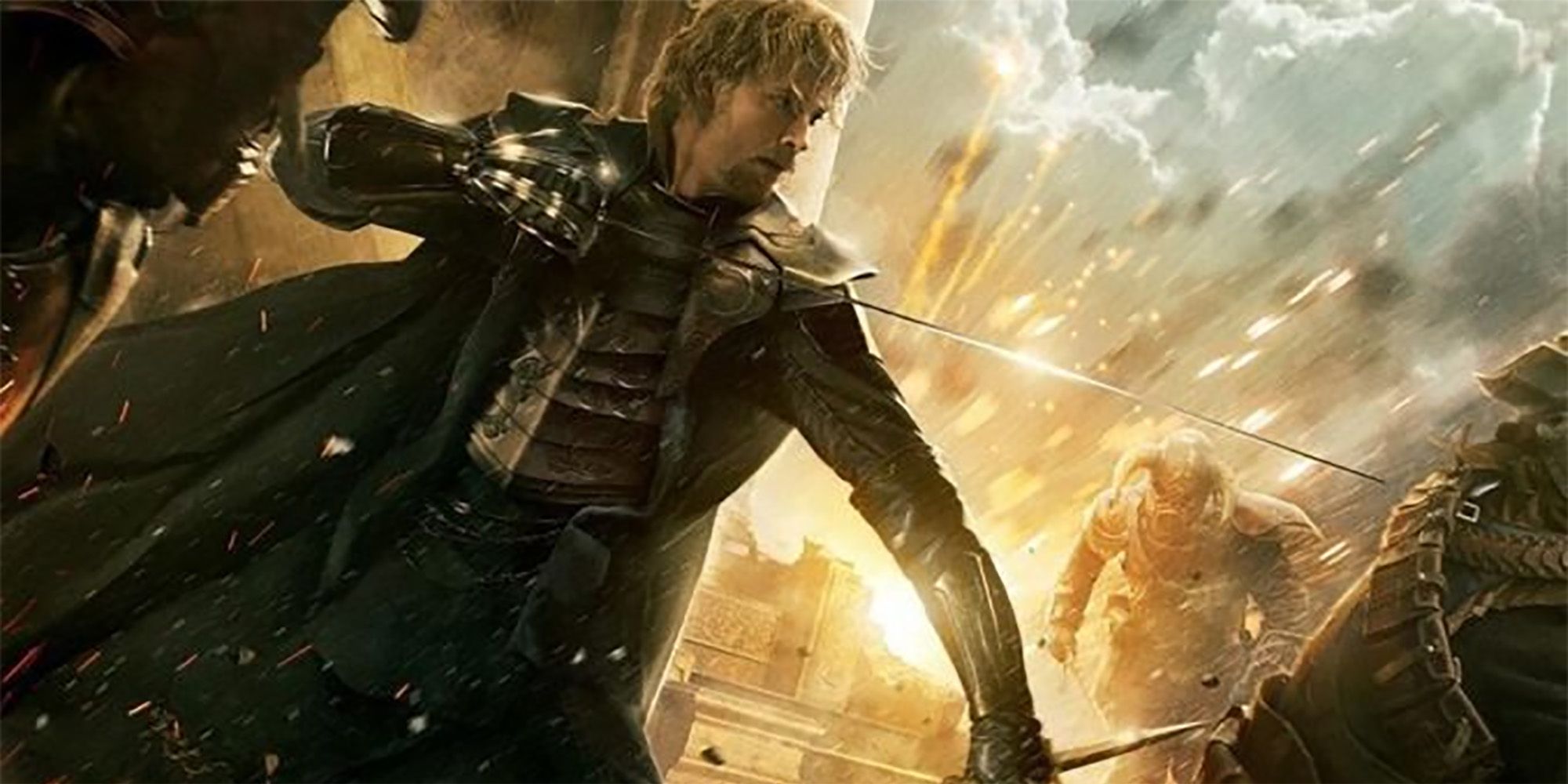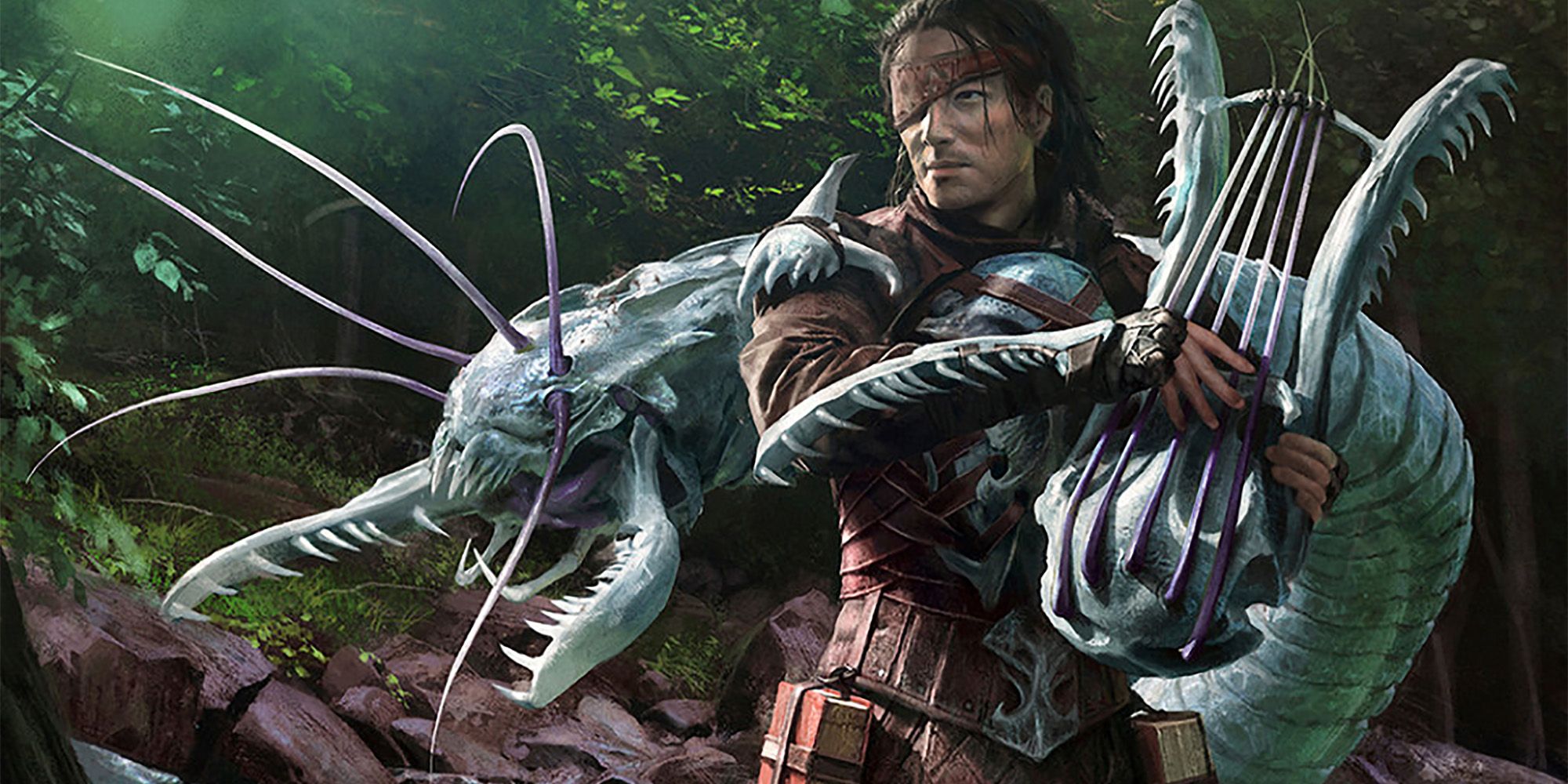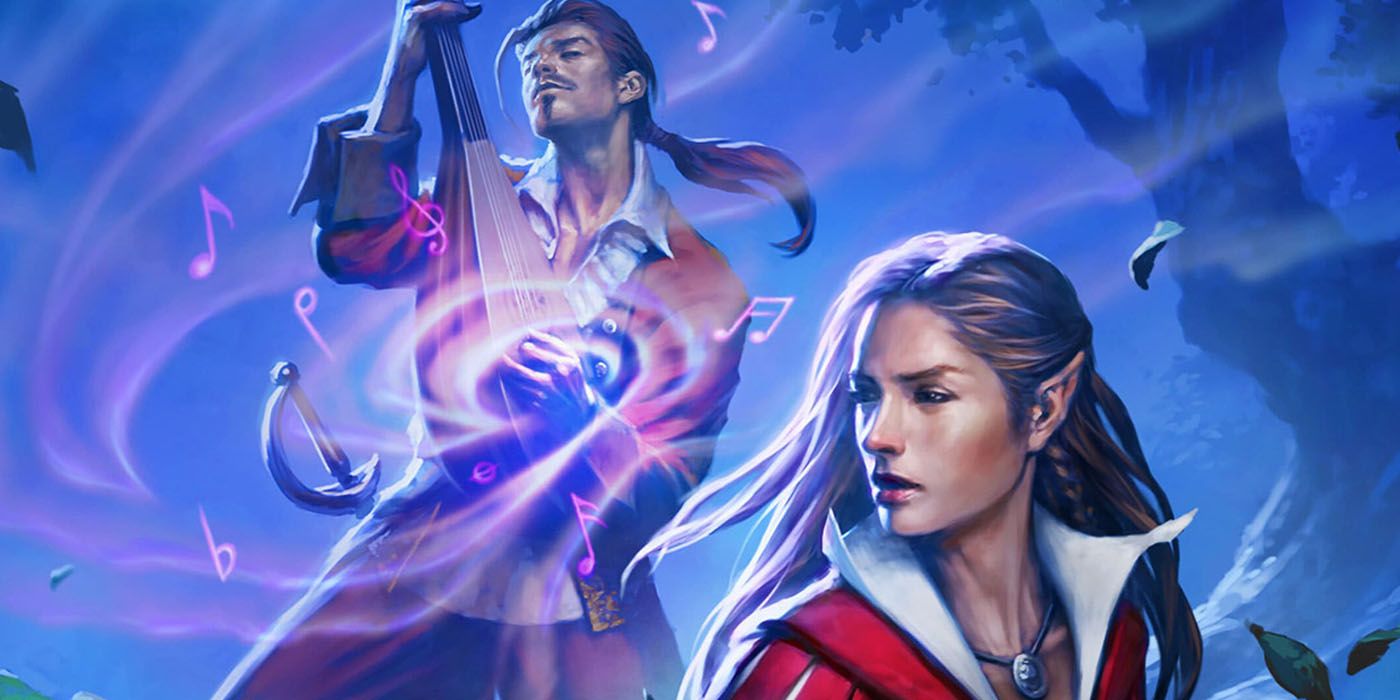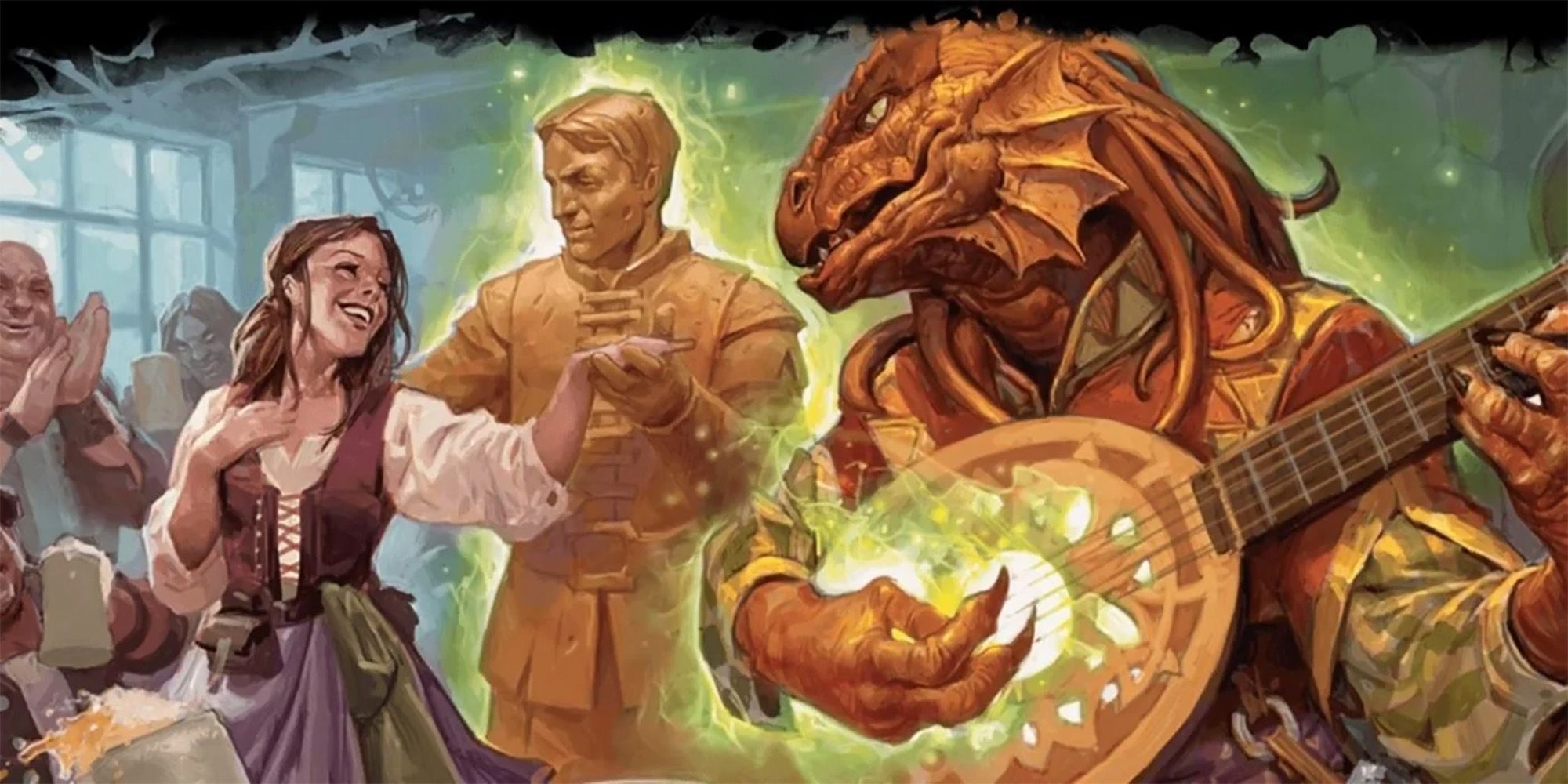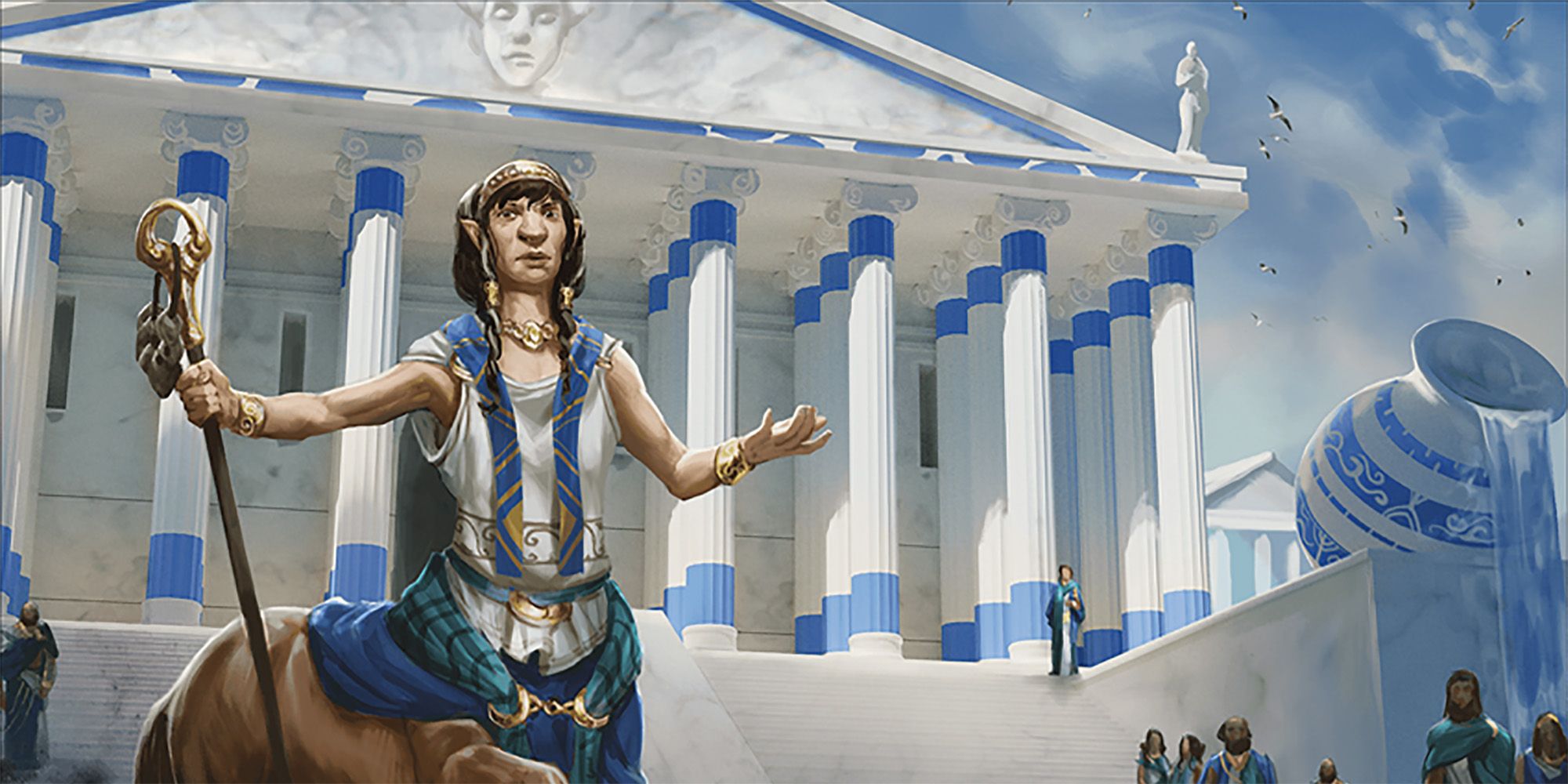For many Dungeons & Dragons players, it's hard to take the Bard class seriously. Because of their high charisma, their persuasion and performance skills allow them to convince just about anyone to do whatever they want while standing on their head and juggling fireballs. They've gained reputations for their promiscuity, and with good reason. Bards are so charismatic that everyone wants a chance to say they had a shot with a legend.
The D&D 5e bard class is a jack-of-all-trades who, depending on the college the player commits to when they reach level three, can take on just about any role they wish to play. From the glamorous, fey-magic-wielding mind-bender to the wandering medium seeking wisdom from beyond the grave, Bards have an abundance of options in Fifth Edition that allow them to become anyone they long to be.
Updated January 4th, 2024 by Louis Kemner: The bard is one of D&D 5e's best and most versatile classes, aided by its wide array of bard colleges. While every one of these subclasses is functional and entertaining, some are better than others. This list has been updated to adhere to CBR's current publication standards.
9 College Of Whispers
Xanathar's Guide To Everything
|
Bard Level |
Subclass Feature |
|---|---|
|
3 |
Psychic Blades, Words of Terror |
|
6 |
Mantle of Whispers |
|
14 |
Shadow Lore |
The D&D 5e College of Whispers subclass puts a dark spin on the bard. Whispers bards use their profession's welcome presence and good reputation as a smokescreen. Where other bards are entertainers, diplomats, and bravos, D&D 5e's College of Whispers bards are spies and assassins.
Every one of the College of Whispers' abilities is geared towards this. They deal additional psychic damage on weapon attacks with their Bardic Inspiration, foment terror or desperation in everyday conversation, and steal the appearance and memories of humanoids they kill. These abilities are all thematic and vital, but they don't come up often in a typical D&D 5e adventuring day.
A College of Whispers bard is by no means weak. However, it's one of the most situational and specific bard colleges in D&D 5e. The College of Whispers dominates intrigue-based adventures or campaigns. However, it's one of the least helpful bard subclasses for more general adventuring, particularly in a combat-heavy dungeon crawl, hence its low rank among the bard colleges.
8 College Of Spirits
Van Richten's Guide To Ravenloft
|
Bard Level |
Subclass Feature |
|---|---|
|
3 |
Guiding Whispers, Spiritual Focus, Tales from Beyond |
|
6 |
Spirit Session |
|
14 |
Mystical Connection |
The College of Spirits is the bard's most recent official subclass in D&D 5e, released in Van Richten's Guide to Ravenloft. They're a more macabre mage and performer, with most of their abilities tapping into the realm of the dead. The D&D 5e College of Spirits bard relies on summoning a random spirit's story with their Bardic Inspiration, which they can later use for a tangible combat benefit.
Ultimately, this holds the College of Spirits bard back. It's one of the least reliable bard colleges in D&D 5e due to Tales From Beyond using a random Bardic Inspiration roll. The character might get exactly what they need in a situation. Alternatively, they might roll something that doesn't help and risk wasting a Bardic Inspiration.
The College of Spirits bard's other abilities are similarly inconsistent. Guiding Whispers buffs one of D&D 5e's single-best cantrips even further. Spiritual Focus has a disappointingly limited effect as written due to how few bard spells need a focus. Spirit Sessions is effectively a low-level, changeable Magical Secret, whilst Mystical Connection finally dials down the randomness of Tales From Beyond.
7 College Of Swords
Xanathar's Guide To Everything
|
Bard Level |
Subclass Feature |
|---|---|
|
3 |
Blade Flourish, Bonus Proficiencies, Fighting Style |
|
6 |
Extra Attack |
|
14 |
Master's Flourish |
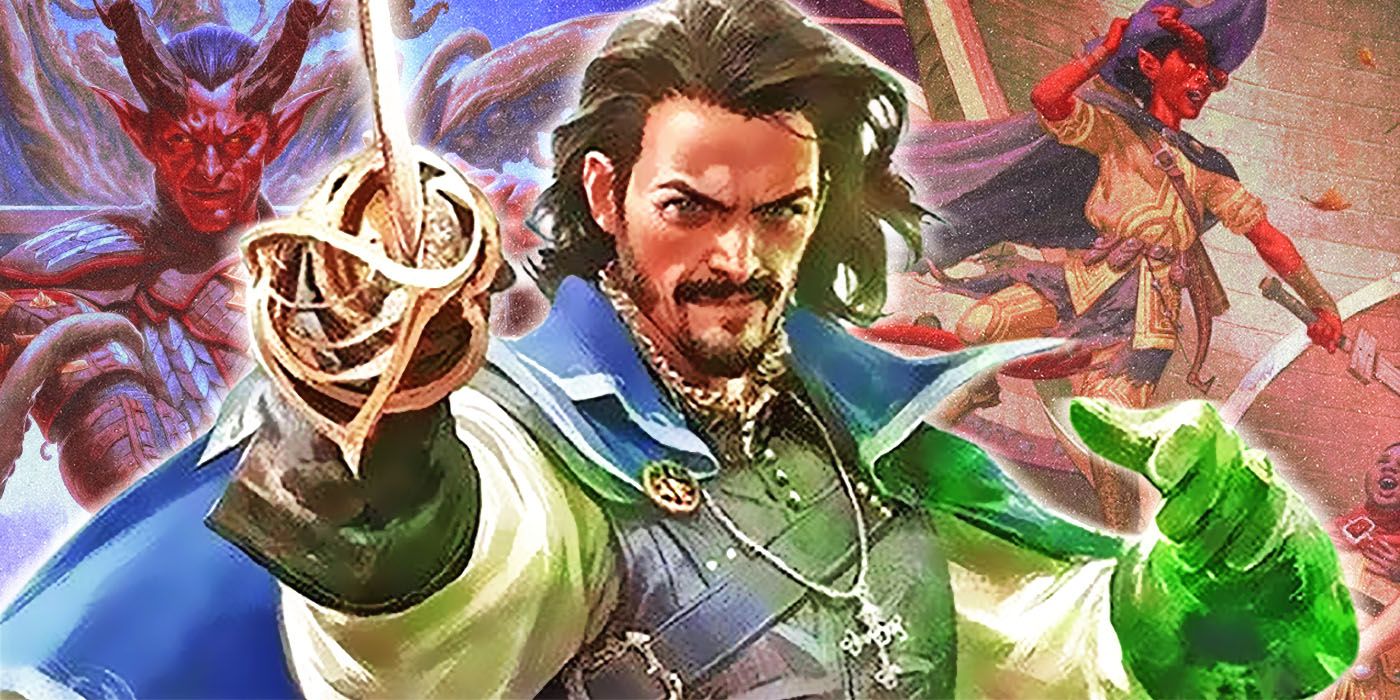
Dungeons & Dragons: How to Build the Perfect College of Swords Bard
The most exciting thing about D&D's College of Swords is that it truly gives Bards an opportunity to do a little of everything with the right build.The D&D 5e College of Swords bard is one of two bardic subclasses that adds some martial flavor, almost like a charismatic fighter. A College of Swords bard is most comfortable flitting in and out of combat with a sword in their hand, using their spells to disrupt enemies or enhance their own capabilities. Their Blade Flourishes and Fighting Style make them the most offensively-oriented D&D 5e bard college by far.
The College of Swords is similar to the D&D 5e Battle Master fighter subclass. They can spend Bardic Inspiration on a hit to deal more damage and move the enemy, hit nearby creatures as well, or increase their own Armor Class. This gives them some of the D&D bard's signature versatility in combat as well as spellcasting. Notably, these abilities work on ranged attacks despite being called Blade Flourishes.
However, the D&D 5e College of Swords bard falls off as a melee combatant. Their damage pales compared to other melee classes unless they dedicate most of their spellcasting to improving themselves. Furthermore, their Blade Flourishes hinder the class' impressive support capabilities until they get Master's Flourish at 14th level.
6 College Of Valor
Player's Handbook
|
Bard Level |
Subclass Feature |
|---|---|
|
3 |
Bonus Proficiencies, Combat Inspiration |
|
6 |
Extra Attack |
|
14 |
Battle Magic |
The College of Valor is the other of the martially-themed bard collages in D&D 5e. Most College of Valor bards can hold their own in a fight but dedicate most of their efforts to improving allies. Rather than an attack-boosting Blade Flourish, they get the enhanced Combat Inspiration that bolsters allies' damage or Armor Class in a pinch.
College of Valor bards are the most durable bard subclass in D&D 5e, with access to shields and medium armor. They can stand on the frontlines, chip away at enemies, and help keep other melee allies rallied. However, they're less likely to be the star of a fight or the one landing the final blow on a dangerous foe.
In particular, D&D 5e College of Valor bards can blend spellcasting and combat better than almost any other subclass. Their Battle Magic ability lets them cast a spell with their action and then attack with their bonus action. This way, a Valor bard can keep allies healthy and buffed without neglecting their own offense.
5 College Of Tragedy
Tal'Dorei Campaign Setting Reborn
|
Bard Level |
Subclass Feature |
|---|---|
|
3 |
Poetry in Misery, Sorrowful Fate |
|
6 |
Tale of Hubris, Unstoppable |
|
14 |
Nimbus of Pathos |
The College of Tragedy is a homebrew Critical Role bard college from Tal'dorei Campaign Setting Reborn. It deals in ironic twists of fate and the potential for greatness in a seemingly insurmountable situation. It combines some distinctly powerful abilities and some potent Bardic Inspiration regeneration with some significant drawbacks.
College of Tragedy bards in D&D 5e alter luck. Their Sorrowful Fate ability goes as far as to change an enemy's bonuses. Any time a creature within 30 feet makes a saving throw against an allied effect, a Tragedy bard can use their Bardic Inspiration to make it a Charisma save, with extra damage on top. Given many D&D 5e monsters' low Charisma, this is a significant debuff.
Most other D&D 5e Tragedy bard abilities rely on quirks of the dice. Poetry in Misery gives back Bardic Inspiration uses on a Natural 1. Tale of Hubris punishes enemies significantly for scoring critical hits. These ensure that the abilities aren't reliably useful, given the unlikelihood of these occurring. In addition, some drawbacks outweigh the ability, such as Nimbus of Pathos causing its target to fall unconscious after one minute of buffs, meaning this otherwise decent subclass ranks in the middle among all bard colleges.
4 College Of Glamour
Xanathar's Guide To Everything
|
Bard Level |
Subclass Feature |
|---|---|
|
3 |
Enthralling Performance, Mantle of Inspiration |
|
6 |
Mantle of Majesty |
|
14 |
Unbreakable Majesty |
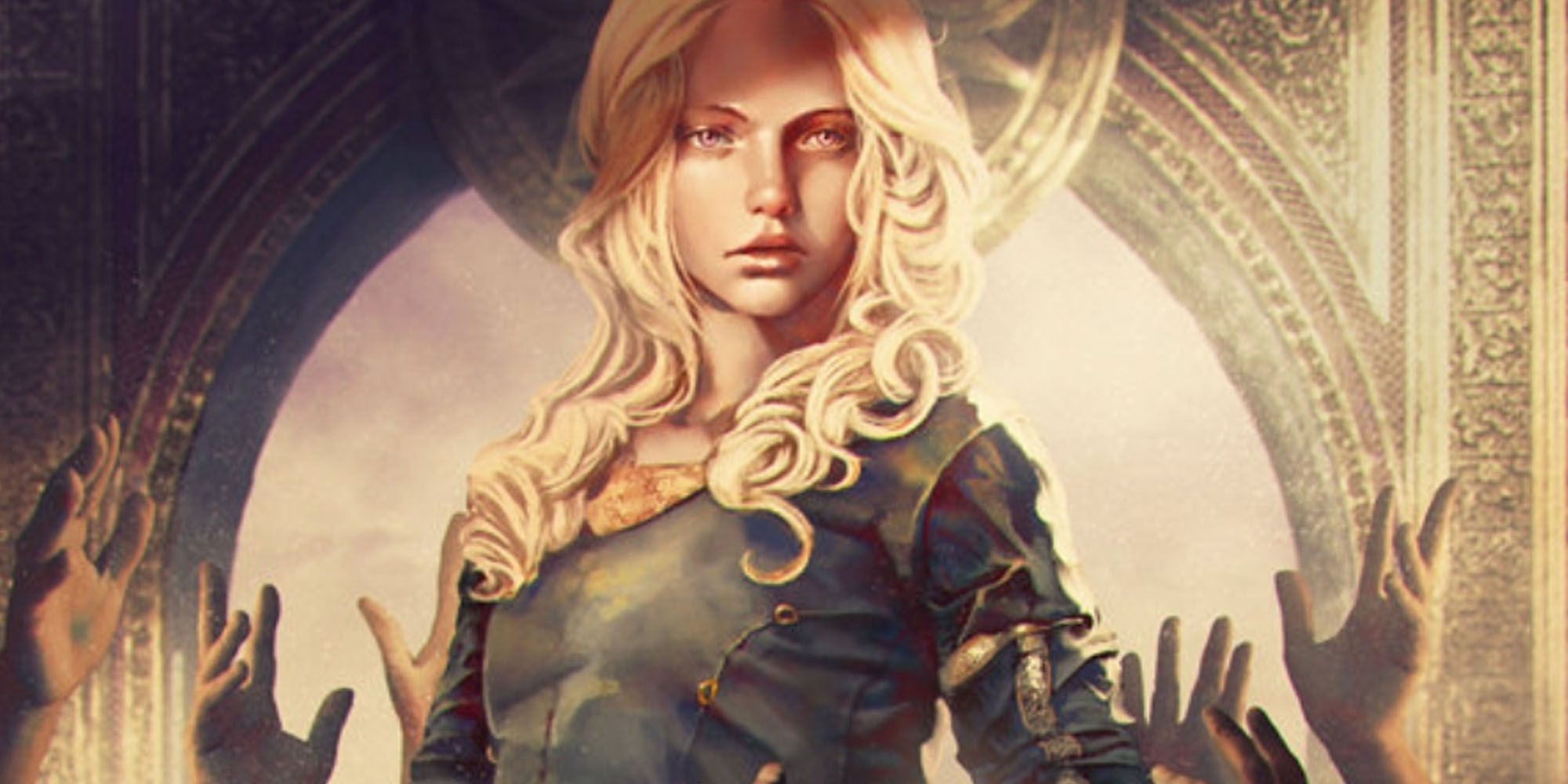
Dungeons & Dragons: How to Build the Perfect College of Glamour Bard
Drawing from the power of enchantment and illusion, Bards from D&D's College of Glamour mesmerize and captivate their audience just like the Fey.College of Glamour bards use fey magic to rally their allies in combat and to dominate social situations when speaking to NPCs. They emphasize charm, support, and crowd control with much less focus on offense. Out of combat, a D&D 5e College of Glamour bard can win a small crowd over with Enthralling Performance and find allies from almost anywhere.
In combat, Glamour bards keep allies healthy and mobile or shut enemies down with charm effects and Command. Mantle of Inspiration gives nearby allies temporary hit points and the ability to move with their reaction. This can rearrange the battlefield, help the party attack in an overwhelming rush, or even facilitate a desperate retreat.
Other D&D 5e Glamour bard abilities let them cast Command as a bonus action every turn for a minute or force enemies to find other targets. These abilities all give a Glamour bard significant versatility both in and out of combat. They're one of the most flexible bard colleges in D&D 5e.
3 College Of Creation
Tasha's Cauldron Of Everything
|
Bard Level |
Subclass Feature |
|---|---|
|
3 |
Note of Potential, Performance of Creation |
|
6 |
Animating Performance |
|
14 |
Creative Crescendo |
College of Creation bards have a split role in D&D 5e. Their core ability, Note of Potential, channels the fundamental music of creation to enhance Bardic Inspiration. It gives a unique benefit to the inspired creature depending on what they use the Inspiration for. However, D&D 5e Creation bards are more than just buffers.
Items are the College of Creation's other focus in D&D 5e. Performance of Creation lets them create a nonmagical item that lasts for several hours at a time. The potential value of this item skyrockets as the bard increases in level. With how many options are available, this ability rewards canny players for their creativity.
In combat, College of Creation bards even the odds with Animating Performance. This turns a nearby object into an ally that attacks with the bard's bonus action. Although not as effective or versatile as many other subclass pets in D&D 5e, this still gives the College of Creation some significant combat power.
2 College Of Eloquence
Mythic Odysseys Of Theros/Tasha's Cauldron Of Everything
|
Bard Level |
Subclass Feature |
|---|---|
|
3 |
Silver Tongue, Unsettling Words |
|
6 |
Unfailing Inspiration, Universal Speech |
|
14 |
Contagious Inspiration |
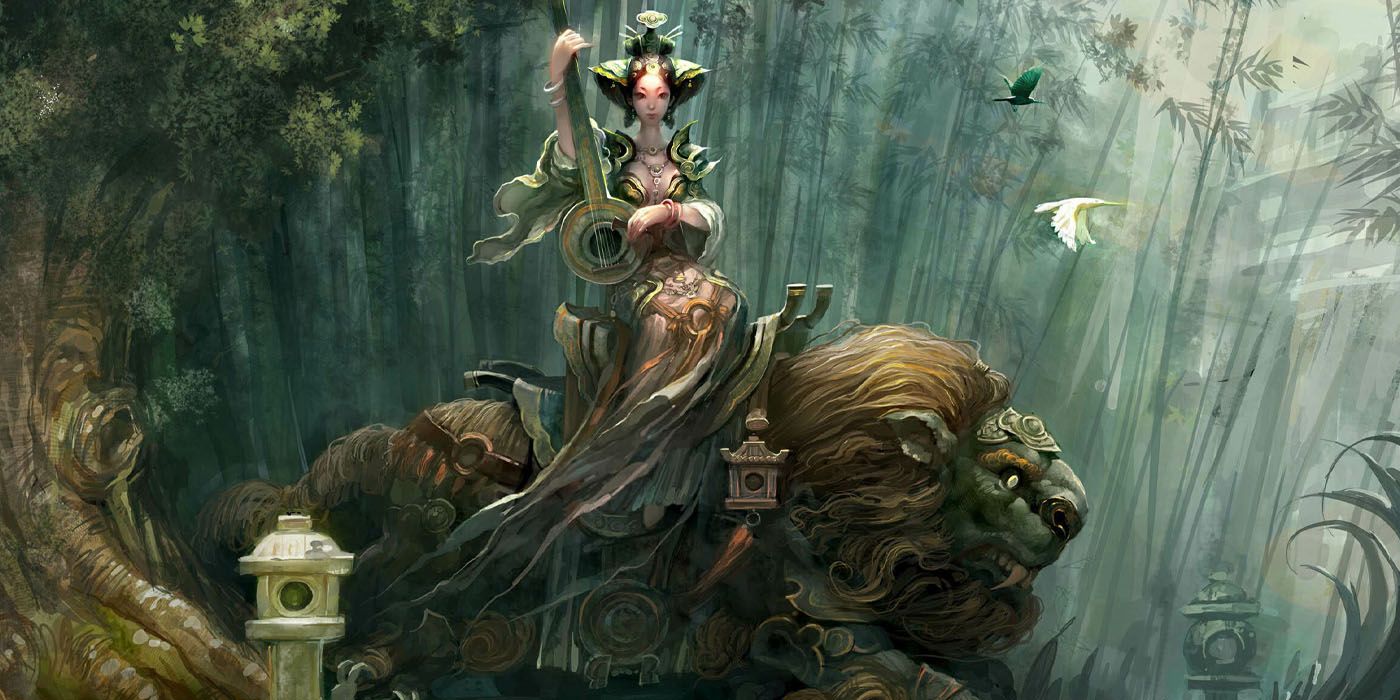
Dungeons & Dragons: How to Build the Perfect College of Eloquence Bard
In D&D, words and stories are the very essence of a Bard's skillset, but the College of Eloquence believes negotiation and persuasion are an art-form.The College of Eloquence doesn't add many new abilities to the D&D 5e bard. Instead, their subclass identity revolves around improving the bard's core functionality. The College of Eloquence dominates social situations with its Silver Tongue ability. Between Expertise, Silver Tongue, and high Charisma, a D&D 5e Eloquence bard can be unable to roll less than a 17 on Persuasion or Deception from third level.
Most of the College of Eloquence's other abilities in D&D 5e revolve around Bardic Inspiration. Unsettling Words deducts Bardic Inspiration from an enemy's saving throws, vastly improving the bard or their ally's spellcasting. Unfailing Inspiration and Infectious Inspiration make Bardic Inspiration stretch even further, stopping it from being used on a failure and letting the bard inspire some allies for free.
Even the College of Eloquence bard's flavor abilities are useful. Universal Speech won't come up in every D&D campaign or adventure, but it can save the party significant trouble when it does. With how effective an Eloquence bard is in conversation, the ability to communicate with even more creatures is welcome.
1 College Of Lore
Player's Handbook
|
Bard Level |
Subclass Feature |
|---|---|
|
3 |
Bonus Proficiencies, Cutting Words |
|
6 |
Additional Magical Secrets |
|
14 |
Peerless Skill |
The College of Lore D&D 5e bard subclass emphasizes everything about the bard other than martial combat. None of its abilities directly help in a fight. Instead, Lore bards are some of D&D 5e's best skill-based characters, spellcasters, and debuffers. They show their mettle early on with three bonus skill proficiencies. This D&D 5e bard college gives more skills than many entire classes.
On top of that, the College of Lore gets new uses for its Bardic Inspiration. Cutting Words lets Lore bards disrupt other creatures' ability checks, attack rolls, or damage rolls with a reaction. Peerless Skill lets them use Bardic Inspiration to improve their own ability checks, giving higher potential bonuses than almost any other class in the game.
However, the D&D 5e College of Lore bard's defining feature is Additional Magical Secrets. This lets them take two additional spells from any spell list in the game at sixth level. On top of the Magical Secrets that every other bard college gets in D&D 5e, this makes a Lore bard the game's most versatile spellcaster by far, and thus the best bard college a D&D player can possibly choose for their bard character.
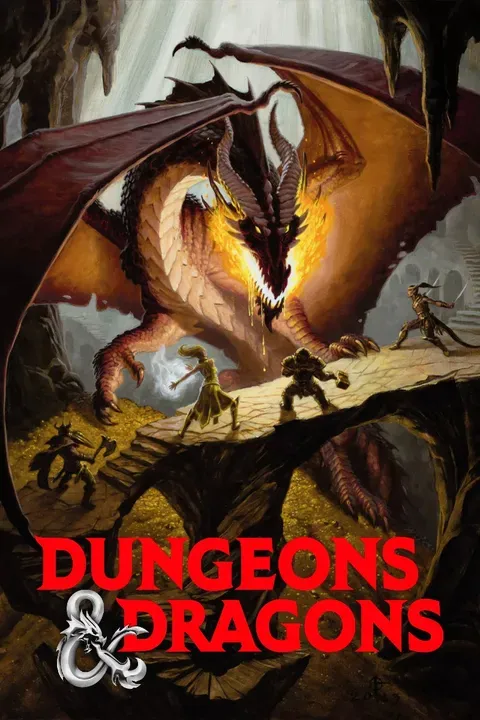
Dungeons and Dragons
A fantasy roleplaying tabletop game designed for adventure-seekers, the original incarnation of Dungeons & Dragons was created by Gary Gygax in 1974.
- Franchise
- Dungeons & Dragons
- Original Release Date
- January 26, 1974
- Publisher
- Wizards of the Coast , TSR Inc.
- Designer
- E. Gary Gygax , Dave Arneson
- Player Count
- 4-8 Players Recommended
- Age Recommendation
- 12+
- Length per Game
- 3 hours +
- Expansions
- Dungeons & Dragons 2nd Edition , Dungeons & Dragons 3rd Edition , Dungeons & Dragons 4th Edition , Dungeons & Dragons 5th Edition

